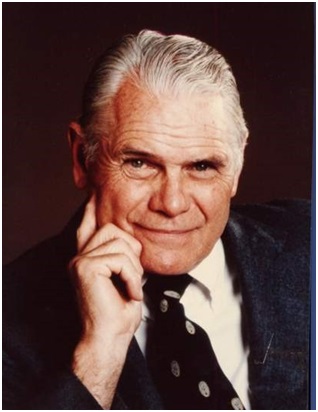 Howard Steel was born in Philadelphia and raised in Atlantic City, NJ. He received his undergraduate education at Colgate University, majoring in chemistry. Following service in the Navy during World War II, he enrolled at Temple University School of Medicine and graduated in 2-1/2 years from their accelerated program. He later earned a PhD in anatomy. He undertook an orthopaedic residency with Dr. John Royal Moore at Temple University Hospital’s Department of Orthopaedics and then remained on the attending staff.
Howard Steel was born in Philadelphia and raised in Atlantic City, NJ. He received his undergraduate education at Colgate University, majoring in chemistry. Following service in the Navy during World War II, he enrolled at Temple University School of Medicine and graduated in 2-1/2 years from their accelerated program. He later earned a PhD in anatomy. He undertook an orthopaedic residency with Dr. John Royal Moore at Temple University Hospital’s Department of Orthopaedics and then remained on the attending staff.
Dr. Steel was appointed was Chief of Staff at Shriners Hospitals for Children-Philadelphia in 1966. He thought there was a need for centers specializing in Pediatric Spinal Cord Injury. He subsequently founded the first ever pediatric spinal cord injury unit in 1980 at the Philadelphia Shriners hospital and then was instrumental in helping the Shriners Hospitals to expand the concept to their Chicago and northern California hospitals. He was extremely supportive of the Shriners hospital staff in research and education in the field of pediatric spinal cord injury. He was one of the early members of the Scoliosis Research Society. He was a founding member of the Pediatric Orthopaedic Society, later to become POSNA.
Dr. Steel pioneered some of the most innovative surgical treatments for their time, many still in use today. He developed the triple innominate osteotomy for acetabular dysplasia. He took a non-traditional approach to extreme lumbar kyphosis secondary to lumboperitoneal shunt in patients with myelodysplasia, treating them with a hanging gravity correction cast. His PhD dissertation entitled “Anatomical and Mechanical Considerations of Traumatic Interruption of the Atlanto-Axial Articulations” led to Steel’s Rule of Thirds. He also championed resection of the rib deformity in scoliosis for bone grafting and improvement in appearance.
A group of grateful patients formed the Howard Steel Orthopaedic Foundation in his honor. Funds from the Foundation support lectures at multiple orthopaedic associations’ annual meetings, including the EOA, WOA, POSNA, AOA, and SRS. His only qualification is that the topics of the talks are non-medical, reflecting his belief in well-rounded knowledge on other life subjects. He was a life-long daredevil and athlete, a globe-trotter, a world-renowned authority on wine of the Rhine Valley and Madeira, a musician, and a great admirer of world languages. Dr. Steel is truly a Renaissance Man.
Dr. Steel is the beloved teacher, mentor, and true friend to three generations of orthopaedic residents and fellows. They learned from his presentations but mostly by observation of the elevated standards of the excellence that he demanded of himself, the compassion he showed for his patients, and the joie de vivre that he brought to work every single day. He engendered tremendous camaraderie and loyalty amongst his students and peers and obviously loved his profession.
